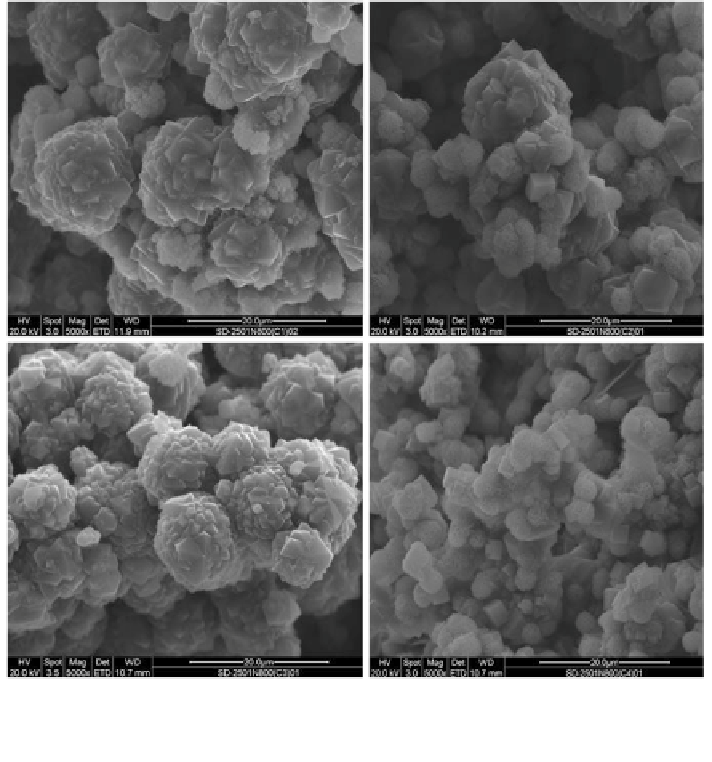Environmental Engineering Reference
In-Depth Information
Fig. 17 SEM micrographs of in situ hydrothermally synthesized zeolite X obtained by the partial
transformation of an Al-containing (13 %) PDC foam with varied Si/Al ratio (top left 6.25;
top
right 5.56; bottom left 5; bottom right 4)
2.3.3 Glass Foams for Environmental Catalysis
Glass foams with a high optical transmittance were prepared by a direct foaming
approach with a poly(methyl phenyl silsesquioxane) (PMPS; Wacker Silres H44),
particulate borosilicate glass
fillers, and sodium borate (Ohl et al.
2011
). In this
case, PMPS was used as a binder, as a silica source for direct glass formation, and
as the foaming agent. In a follow-up paper, a similar approach was applied to load
glass foams with a photocatalyst (Bhattacharjee et al.
2011
). A preceramic polymer
(H44) was loaded with Duran glass particles and TiO
2
(anatase) nanoparticles,
directly foamed, and thermally consolidated. Fourier-transformed infrared spec-
troscopic (FTIR) investigations showed that the anatase nanoparticles were chem-
ically bound to the glass foam matrix indicated by Si
O
Ti bonds, thus preventing
-
-

Search WWH ::

Custom Search